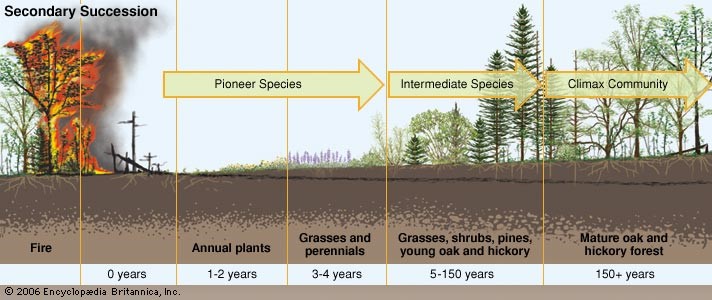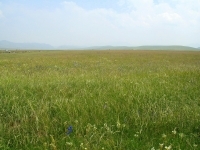Most of the knowledge about prairie ecological succession is from studying secondary prairie ecological succession. Primary succession doesn't happen too often these days unless it's from a volcano erupting. This blog is going to concentrate on secondary succession when observed in the setting of an abandoned field. The reason this is considered secondary succession is because the starting landscape is reduced from non-natives invading the once agricultural field.
As I talk about succession, keep in mind that not every example will be exactly the same.
 I think the best way to describe secondary prairie succession will be to give you an example from Vegetation of Wisconsin by John T. Curtis. This example includes a secondary prairie succession study that was done in two different locations in Juneau and Dunn Counties with the same sandy habitat located near the contact zone of prairie and northern pine-hardwood forest. Both of these sites were abandoned fields, and in the first five years of monitoring after abandonment the sites were mainly comprised of annual weeds: common ragweed, sandbur, horseweed, foxtail grass and biennial sand primrose. In years 5-10, early perennial prairie plants were the majority of the habitat. Those plants included little bluestem, round-headed bush clover, rough bentgrass, and flowering spurge.
I think the best way to describe secondary prairie succession will be to give you an example from Vegetation of Wisconsin by John T. Curtis. This example includes a secondary prairie succession study that was done in two different locations in Juneau and Dunn Counties with the same sandy habitat located near the contact zone of prairie and northern pine-hardwood forest. Both of these sites were abandoned fields, and in the first five years of monitoring after abandonment the sites were mainly comprised of annual weeds: common ragweed, sandbur, horseweed, foxtail grass and biennial sand primrose. In years 5-10, early perennial prairie plants were the majority of the habitat. Those plants included little bluestem, round-headed bush clover, rough bentgrass, and flowering spurge.
The peak of these sites happened from years 10-20 when western sunflower, rough blazing star, cream wild indigo, sand coreopsis, and other more conservative perennial prairie plants were present. Within this time, year 15, is when the neighboring forest started to invade the prairie. Jack pine, hill's oak, sweet fern, and blackberries were some of the invading species. By year 35, the sites were shaded out and the prairie was the minority. Because the lack of fire, the woody species weren't held in check, therefore they moved in rapidly and out competed the sun-loving prairie plants.
If you want to learn more about prairie ecological succession, join the land stewardship team at one of our walk-in volunteer times and ask us questions! We are always excited to teach!





